 Spring arrives later and proceeds down the garden, forest and farm-field aisles with more gradual, cautious steps in northern Michigan than it does even in parts of the state just a few hours to the south. When the lilac bushes hereabouts at last drop their shoulders under the weight of fully opened flowers, lilacs in the Detroit, Lansing and Grand Rapids areas will have passed their peak by a couple of weeks. Peonies generally aren't ready to shake out their pom-pom heads until after Memorial Day. Nighttime frosts continue with regularity right through April, can and do keep showing up in May to lay killing fingers on emerging growth. Memorial Day is traditionally held to be the earliest safe date for setting out tender starter plants, although last year that holiday weekend which is supposed to usher in summer brought, instead, a hard frost.
Spring arrives later and proceeds down the garden, forest and farm-field aisles with more gradual, cautious steps in northern Michigan than it does even in parts of the state just a few hours to the south. When the lilac bushes hereabouts at last drop their shoulders under the weight of fully opened flowers, lilacs in the Detroit, Lansing and Grand Rapids areas will have passed their peak by a couple of weeks. Peonies generally aren't ready to shake out their pom-pom heads until after Memorial Day. Nighttime frosts continue with regularity right through April, can and do keep showing up in May to lay killing fingers on emerging growth. Memorial Day is traditionally held to be the earliest safe date for setting out tender starter plants, although last year that holiday weekend which is supposed to usher in summer brought, instead, a hard frost. Along the coastal fringes of Lake Michigan, the water of the big lake moderates the temperature somewhat, and in consequence the last frost date here will be earlier than just a mile or so inland from the shoreline. Nonetheless, the nights still nosedive into the twenties and thirties throughout April and May. It is really hard to curtail the urge brought on by seductive spring daytime temperatures to get out in the garden and start sowing. The pile of seed packets stands at the ready on the kitchen counter, listing ever so longingly towards the back door. There are exciting new characters in the pile, with glamorous headshots profiling the good looks they are ready to bring to the garden stage. The planting instructions are perused again and again, maybe it didn't really say wait until after all chance of frost?
Patience isn't just a virtue, it is a non-negotiable job requirement for a gardener. Almost everything done in the garden is done for the delayed gratification, sometimes very long delayed, of a future reward. Being too hasty and attempting to accelerate any part of the stately, methodical process of raising a garden usually leads to heartbreak, as surely as does stampeding gung-ho into a fledgling romance. Gardens want to be courted the old-fashioned way, gently and steadily wooed into fruition. Their response to stalking, imploring and badgering will be to shrivel away from the suitor. Seeds and young plants put out when the nights still fall into frozen postures may not die, but neither will they thrive, and the poor, shocking start can arrest and stunt their growth throughout the summer.
Right now the signs of incipient spring are still almost nonexistent. The trees remain flat brown and grey, no blushes of returning growth yet color their bark in Easter pastel greens, yellows and rose. The grass on the meadows and fields is the tawny, lifeless color of dried cornstalks, the American dune grass on the beaches is the pale, quiescent blond of Marilyn Monroe's hair. In the garden, only the merest tip of the primroses, a handful of the daffodils, and a few skinny fronds of the poppies have made their way through the cold ground and taken on the green hue of rebirth.
In the last week or so, spring has deigned to advance far enough to re-open most of the hiking areas that become inaccessible under winter's snow and ice payload. As winter marches onward in the Leelanau Peninsula, the number of places where a hike can be taken diminish week by week. Trailheads become unreachable down unplowed, knee-high, snowed-buried country roads. With the trails out of reach, only the beaches remain passable for walkers. Then the treacherous, chunky, slick freezing of the sands sets in, arctic icebergs get thrown up on the shorelines by the tumultuous November and December gales, and the beaches, too, become unwalkable. By February and into March, only the town and village roads are left as possibilities for stretching the legs without first donning snowshoes or cross-country skis.
Spring has at least now bequeathed back the country trails, the dunes and beaches. The snow and ice have mostly melted, back-country gravel roads can be navigated, trailheads achieved. The dunes shed their winter duvets of snow, and startle again with how much, each year, they shift and change their shape. This spring the annual shape-shifting wrought by the winter winds is most visible at the Sleeping Bear Dunes dune climb along Highway 109. The dune climb plateau has migrated downward what looks to be about six feet, it's horizontal headland now scooped out to resemble a swayback sculpted crescent. The waterline of the lake is higher this year, as well, the winter's heavy precipitation having forwarded it right to the foot of the bluffs at Sleeping Bear Point, and swallowed up five to ten feet of sandy beach. New hills, ridgelines and sweeping sand bowls redefine the dune silhouettes all up and down the coast, a facelift that changes the vistas encountered on each familiar trail. The altered limbs and muscles of the dunes are a reminder that they live, breath, heave, cascade, and evolve. The bears do not stay still, but roll over in their sleep.
For now, the gardener needs to unhand those seed packets, take a deep breath, explore anew another trail friend back from winter hibernation, and accept the fact that calendar dates signifying the commencement of spring for other climes mean, in northern Michigan, that the garden is just turning over and snuggling back down into another month or two of its beauty sleep, not even close to prepared to rise and shine. As garden writer Eleanor Perenyi advises, “patience is the only way. The seasons can't be rushed, or halted.” Nature knows when the moment is right to bedeck herself in bonnets of narcissus and white gloves of snowdrops, to slip into her patten leather pumps of kelly green creeping phlox, and step forth to give us her hand for the opening dance of springtime. The gardener, hat in hand, can only wait.
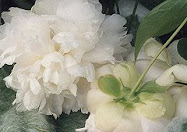
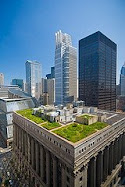

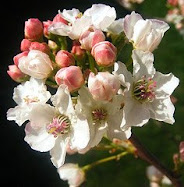
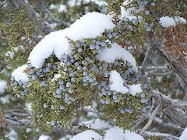


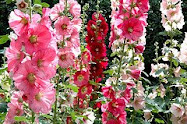

No comments:
Post a Comment